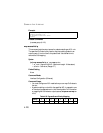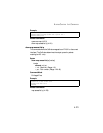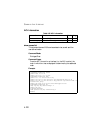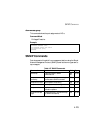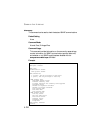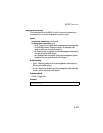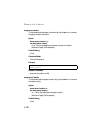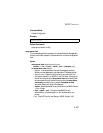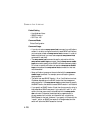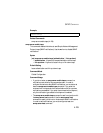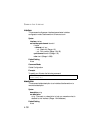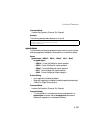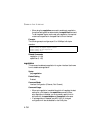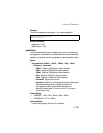
C
OMMAND
L
INE
I
NTERFACE
4-128
Default Setting
• Host Address: None
• SNMP Version: 1
• UDP Port: 162
Command Mode
Global Configuration
Command Usage
• If you do not enter an snmp-server host command, no notifications
are sent. In order to configure the switch to send SNMP notifications,
you must enter at least one snmp-server host command. In order to
enable multiple hosts, you must issue a separate snmp-server host
command for each host.
•The snmp-server host command is used in conjunction with the
snmp-server enable traps command. Use the snmp-server enable
traps command to specify which SNMP notifications are sent globally.
For a host to receive notifications, at least one snmp-server enable
traps command and the snmp-server host command for that host
must be enabled.
• Some notification types cannot be controlled with the snmp-server
enable traps command. For example, some notification types are
always enabled.
• The switch can send SNMP Version 1, 2c or 3 notifications to a host
IP address, depending on the SNMP version that the management
station supports. If the snmp-server host command does not specify
the SNMP version, the default is to send SNMP version 1 notifications.
• If you specify an SNMP Version 3 host, then the community string is
interpreted as an SNMP user name. If you use the V3 “auth” or “priv”
options, the user name must first be defined with the snmp-server
user command. Otherwise, the authentication password and/or
privacy password will not exist, and the switch will not authorize
SNMP access for the host. However, if you specify a V3 host with the
“noauth” option, an SNMP user account will be generated, and the
switch will authorize SNMP access for the host.



